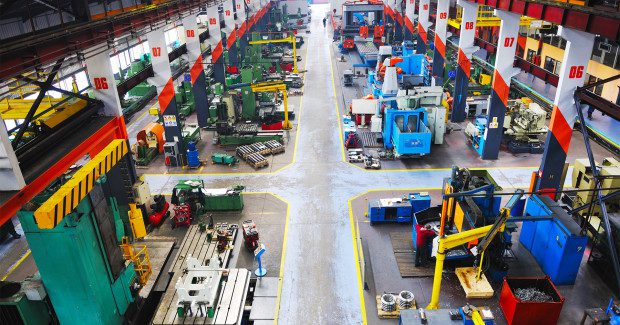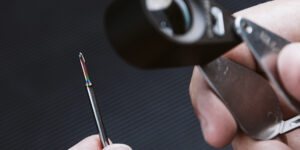Tax Tips for Job Shops: The R&D Tax Credit
Time to start thinking about the tax bill that comes due next spring. Michael Siegel of alliantgroup explains how to identify those practices that will qualify for this valuable credit and take advantage of one of the most generous tax incentives out there.
Posted: November 7, 2015
What does “research and development” have to do with metal manufacturing?
According to the federal government (and most state governments), quite a bit. In fact, R&D could be the ticket you need to slash your company’s tax liability, and it’s all thanks to one misunderstood tax incentive.
The Research and Development (R&D) Tax Credit is one of the most generous tax incentives out there, with the IRS estimating that $10.8 billion in federal tax credits were claimed in 2012 alone (the most recent tax year on record). Considering that this estimate does not include credits claimed by S-Corps or LLCs or the amount of R&D credits claimed at the state level, the amount of total R&D credits claimed for 2012 is likely much higher than reported.
Perhaps most encouraging for job shops (which constitute an important part of the broader manufacturing sector), not only was manufacturing the largest industry segment – with 39 percent of all R&D credit claimants – but it was also the largest vertical in terms of the total dollars claimed at 61 percent. So how valuable can the R&D Tax Credit be for a metal fabrication and machining business? Countless production and design specializations make job shops potentially eligible for hundreds of thousands of dollars (or more) in tax savings.
For example, for four years’ worth of projects related to stamping, welding, laser cutting and other activities necessary in the design and production of customized parts, one metal parts manufacturer received $788,123 in federal credits, proving that there can be a substantial return for just doing the work a company would normally do in the course of their daily operations. Think about that.
Considering the potential value on the table, if your shop already does or is looking to do any of the following activities, I would highly encourage you to take a second look at the R&D credit:
(1) YOUR SHOP IMPROVES ITS PRODUCTS
Even though the R&D Tax Credit is tailor made for the benefit of a wide range of manufacturers, in terms of getting full value for their R&D work, the manufacturing industry — and American businesses in general — have a long way to go. It has been estimated that only one out of every 20 eligible U.S. businesses actually claims the R&D Tax Credit, and I can tell you from personal experience that manufacturers are still among the groups most prone to leave their hard earned tax dollars on the table.
Why?
Well, self-censorship tends to be the biggest problem and this is mostly due to a simple misunderstanding. When people hear the term “R&D,” they tend to think of scientists and test tubes, but the reality behind the credit is much more simple and practical: applied science does count toward eligibility and is as relevant as any research taking place inside a laboratory. In other words, a job shop can be rewarded handsomely in the form of valuable tax credits for the practical problem solving that takes place on the factory floor, the everyday trial-and-error work that goes into solving those problems, and the gradual steps taken to produce the best product or process possible.
For example, one tool and die manufacturer received $445,014 in federal credits for four years’ worth of eligible R&D projects that included the design and development of store fixtures, point-of purchase displays, workstations and storage products in jobs for its customers. In one specific case, the shop developed a grocery store checkout stand that pivoted out to close off the checkout lane while it was unattended. While a seemingly simple project, development of the checkout stand lane blocker required multiple designs and product test runs to ensure a functional product.
Developing practical solutions to everyday problems — this is a key way that job shops can qualify for R&D credits.
(2) YOUR SHOP NOT ONLY IMPROVES A PRODUCT, BUT THE WAY THOSE PRODUCTS ARE MADE
As written into the tax code, eligibility for the R&D Tax Credit hinges upon improving a product, process, technique, formula, invention or software. As applied to manufacturers, product development is obviously a common path toward eligibility, but I cannot emphasize enough the value in improving the processes that make those products.
Remember that metal parts manufacturer I discussed in the beginning? What played a vital role in that hefty credit result was not just the parts that the shop created, but the process undertaken by the shop to develop said parts. Taking one of their specific projects as an example, the development of a trailer part using ¼ in grade material, the company had to develop a unique methodology to even produce the new part (as well as create the part itself). After using CAD programming to develop several alternative designs for customer evaluation, the shop laser cut a prototype to determine the optimal method for developing the part to achieve specifications. After evaluating the first prototype, the shop determined that it failed to achieve project requirements and made necessary tooling adjustments, repeating the process until the optimal method for fabrication was discovered and the trailer part was successfully developed.
The key take home here: when claiming R&D credits, make sure that your shop takes into account all of the activities that, from design to delivery, can lead to eligibility.
(3) YOUR SHOP MAKES CUSTOM DESIGNS OR PROTOTYPES
While manufacturers of all shapes and sizes can claim the R&D Tax Credit, some of the best candidates tend to be companies like the above parts manufacturer that are making either custom designs or prototypes. As a result, job shops, metal fabricators and tool and die manufacturers — due to their work with prototypes and specifically customized parts — are among some of the best candidates for the credit. The reasons for this are quite simple and relate back to applied science: creating a customized part — for example, the pistons for a new auto engine — requires many man-hours of design and experimentation to ensure the pistons fit the engine specifications of the customer. This kind of applied science and experimentation, however, is R&D in its purest form and exactly the kind of work the R&D Tax Credit seeks to incentivize.
(4) YOU ARE LOOKING FOR FUNDS TO INVEST BACK INTO YOUR BUSINESS
“Since we just invested heavily in new equipment, the credit was a big help in offsetting that cost by keeping revenues within our operations,” explained Mike McCormick, the owner of Triad Manufacturing Inc. (St. Louis, MO), a customized wood and metal fixtures manufacturer. This quote points to perhaps the best thing about the R&D Tax Credit — namely, that the accrued credits are often used by businesses to fund further R&D expenditures, purchase new equipment, and hire additional employees. In short, by claiming this tax incentive, the shop will be fulfilling the original intent of the credit: to encourage the growth of R&D-related activities and strengthen the bottom line of American businesses.
If any of the these four points sound familiar to your shop, I would highly encourage you to take a second look at the R&D Tax Credit.

















